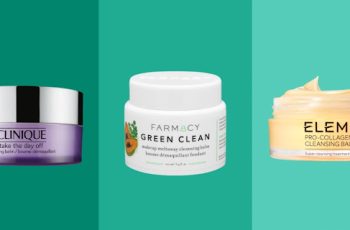Pumpkin Benefits for Skin and Hair Care – Why are pumpkins good for skin and hair?
Pumpkins are not just a decoration for your doorstep, they also have unexpected benefits for your skin! So before you throw away the leftover pumpkin flesh from your Halloween crafting, check out these ideas on how to use this skin-boosting superfruit!
Face Masks for a Glowing Effect
Pumpkin is a great source of vitamin C, and its antioxidant properties fight free radicals on the skin that can cause wrinkles. Vitamin C is also great for treating all the textures and uneven skin tones on your face, such as dark spots. To fade dark spots and give your skin a healthy glow, try the recipe below.
1 tablespoon pumpkin puree
1 teaspoon honey
1 teaspoon lemon juice
1 teaspoon vitamin E oil
Apply the mixture to wet skin for 30 minutes, wait for the mask to dry, and then rinse with warm water.
Lip Exfoliator and Lip Balm
For many people, lip balm is a must during the colder months! Since chapped, flaky lips are so uncomfortable, a scrub and balm can work wonders for sore lips by eliminating the flaking and moisturizing them. Here’s a lip scrub and balm 2-in-1 recipe!
1 tablespoon coconut oil
1 tablespoon pumpkin seed oil
1 tablespoon brown sugar
1 teaspoon cinnamon
Combine the coconut and pumpkin seed oils in a bowl and heat in the microwave for 30 seconds. Let the mixture cool but not harden, then add the brown sugar and cinnamon. Let cool completely, then the scrub and balm are ready to use!
The coconut oil is moisturizing, the pumpkin seed oil is very hydrating for dry skin, while the sugar provides the exfoliating part of the mixture for exfoliation, and the cinnamon not only adds a wonderful flavor, but also helps plump up the lips. This recipe makes for a versatile lip scrub and moisturizer in one jar! Perfect for getting through these colder months!
Body Scrub
I’m not gonna lie to you, this recipe will get you dirty! I find it’s best to just hop in the shower and exfoliate my body. Here’s what you need:
1x small bowl of pumpkin pulp
1 tablespoon of coconut oil
1x small bowl of pink Himalayan salt
Mix the ingredients with your hands and rub the scrub all over your body. The salt removes dead skin cells while the coconut oil and vitamin E-rich pumpkin pulp regenerate the skin and restore moisture.
Nourishing Hair Mask
This hair treatment is extremely beneficial if you have very dry hair. Here’s what you need to make this mask.
1x small bowl of cooked pumpkin
1 tablespoon of coconut oil
1 tablespoon of honey
2x tablespoons of yogurt
In a blender, puree the cooked pumpkin and yogurt to a thick consistency, add the coconut oil and honey and continue blending. Apply the hair mask to damp, washed hair and leave it on for 15 minutes. You can leave your hair like this or use a shower cap. Rinse thoroughly and you’re done! Your hair is restored, nourished, and shiny!
Anti-aging Treatment
Pumpkin is rich in many vitamins and also contains beta-carotene, which can miraculously reverse the damage caused by UV rays to your skin. Let’s not forget that your skin tone and elasticity will improve thanks to the collagen-boosting benefits of this fall superfruit!
You can mix up a mask at home to treat your skin, the ingredients used vary to help different skin types (dry and oily). Below you’ll find recipes for both.
Dry Skin
2 teaspoons cooked pumpkin
½ teaspoon honey
¼ teaspoon heavy cream
Use a fork to puree all ingredients and place in a bowl. Apply the mask to a clean, dry face and let dry for 10-15 minutes. Although this mask only has 3 ingredients, you’ll notice your skin is exfoliated, nourished, and hydrated when you rinse it off! Apply some moisturizer and both you and your skin will feel happy and comfortable.
Oily skin
1 tablespoon of cooked pumpkin
1 teaspoon of apple cider vinegar
Using the same method as before, blend these ingredients into a puree with a fork, apply the mixture on wet face and let it dry for 30 minutes, rinse with warm and cold water to shrink pores, apply some moisturizer, and you will find that your skin is healthy and deep and feels clean.
So, if you are craving pumpkins, don’t waste them, make them look gorgeous instead of scary this Halloween!
DQH Can I use salicylic acid first and then vitamin C?
It’s easy to create a skincare routine, but knowing how to use it is another thing entirely. In most cases, if you’re not getting the desired skin results, it could be due to the layering of conflicting ingredients. So, is it possible that salicylic acid and vitamin C are such ingredients? Or are these active ingredients the duo that’s been missing from your skincare routine? If you want answers, stick around because today we are going to explain the benefits of salicylic acid and vitamin C and how they can be used in your daily life.
What are the benefits of salicylic acid for skin?
Salicylic acid is one of the most commonly used beta hydroxy acids and is favored by many people with oily, acne-prone skin. This acid is derived from willow bark, and unlike its water-soluble relatives (called alpha-hydroxy acids), salicylic acid is oil-soluble, which means it can penetrate deeper into the lower layers of the skin. Once it reaches the lower layers, it can help unclog pores of excess sebum, dirt, bacteria, debris, and impurities. This results in clearer skin tones and greater definition.
Not only does salicylic acid benefit the underlying layers, but the outer surface of the skin benefits as well. When applied to the skin, salicylic acid removes the buildup of dead skin cells. This is accomplished by breaking the bonds that hold dead cells to the surface. Over time, this can cause the complexion to look dull and prone to acne, blackheads, and other blemishes.
If you’d like to learn more about salicylic acid and how it can improve your skin, check out this dedicated blog post from a beauty insider.
What are the benefits of vitamin C for skin?
Vitamin C is considered one of the most powerful antioxidants, which means it is very effective at fighting free radicals and preventing them from causing further skin damage. Examples of free radicals include pollution, central heating, UV rays and harsh climate. They attack proteins, fats and cell membranes as soon as they come into contact with the skin, causing signs of premature aging such as fine lines and wrinkles as well as hyperpigmentation, flaky patches of skin and loss of elasticity.
Many people usually prefer to use vitamin C in their morning routine as this ingredient gives the complexion a radiant glow. You’ll also find that vitamin C can target areas of hyperpigmentation, plumping the skin and reducing the appearance of fine lines and wrinkles.
The thing about vitamin C is that there are a lot of outdated studies going back to the 1950s that describe vitamin C as an unstable skin component. Thanks to improvements in modern technology, this is no longer the case as all products now contain a stable form of vitamin C.
Visit The Beauty Insider to learn more about vitamin C. So please check out our blog post.
Can I use salicylic acid first and then vitamin C?
Yes, you absolutely can. In fact, it’s thought that using salicylic acid before using vitamin C ensures it penetrates faster and works faster.
This is an efficient way to utilize two power sources, and the reason has to do with pH. For example, the skin’s natural pH is about 4.7, making it slightly acidic. Salicylic acid and vitamin C are also both acidic, and you’ll find that vitamin C is absorbed quickly into the skin. Therefore, using salicylic acid beforehand can increase the acidity of the skin and allow vitamin C to penetrate into the skin faster.
While this is considered an effective way to combine two powerful ingredients, you need to be aware of your skin type and how it reacts to certain active ingredients. Even people with perfect, normal skin can experience skin sensitivity and irritation. Therefore, always consult a doctor or dermatologist before using any new products on your skin.
It’s also important to follow skin application rules. In this case, you need to use the product correctly to ensure you get the best results for your skin. If you’re not sure what I mean, the basic rule for skin is to start with the thinnest consistency and work your way up to the thickest consistency. This prevents a barrier from forming on the surface, preventing other active ingredients from penetrating the skin.
Can I use salicylic acid at night and vitamin C in the morning?
Yes, absolutely, this is considered the most effective way to get returns without any adverse side effects. This is because there is enough time between applications to ensure that the skin’s pH levels return to balance.
You’ll also find that Vitamin C is rich in antioxidants and is perfect for use in the morning to ensure your skin is protected and looking its healthiest. Due to the small size of salicylic acid molecules, it is an acid that is able to reach the deepest parts of the skin. While this is effective at keeping skin clear, it also increases the risk of irritation and photosensitivity. Therefore, many people prefer to use powerful BHAs in their evening routine without exposure to UV rays, pollution, or harsh weather.
Warning: If you avoid using sunscreen every day, none of these ingredients will do what your skin needs. The combination of chemical peels and powerful ingredients increases the risk of further damage to the skin’s surface. Use SPF 50 every day to keep your skin protected and your lipid barrier healthy, even on cloudy days, keeping your skin in top condition.



